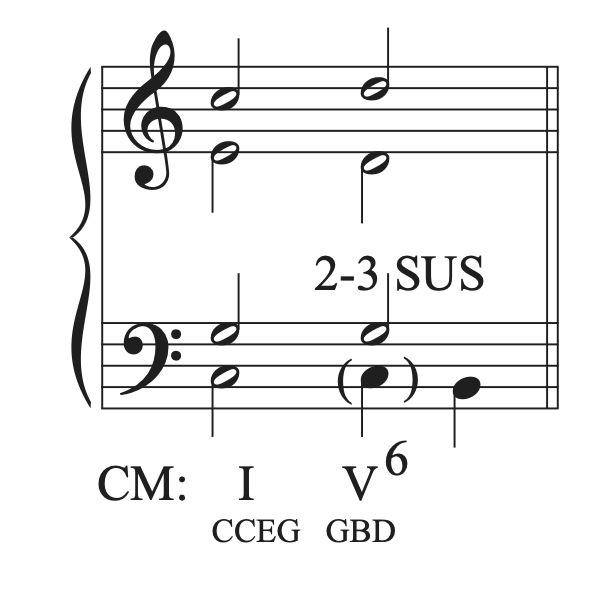10.3 Part Writing, First Inversion Triads and Suspensions: Theory exercises
In addition to Workbook Chapters 10.3.1 and 10.3.2, see the examples below.
Example 1
The first example uses a diminished chord in first inversion. As usual, the first part writing step is to write the notes in each chord with proper doubling and accidentals.
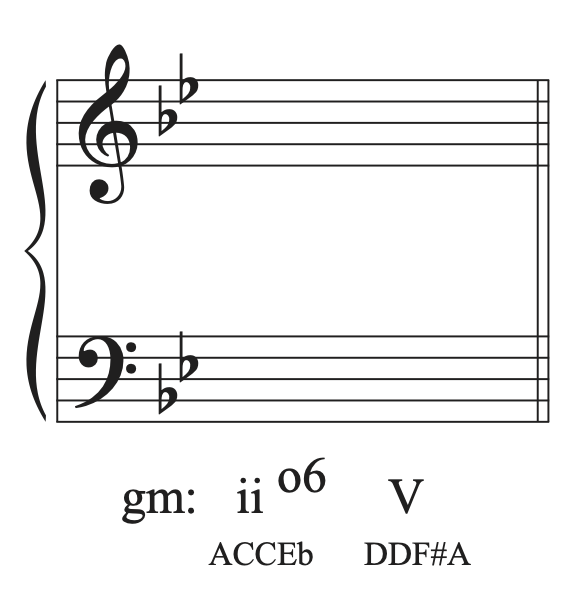
Then, voice the first chord, taking into account usual part writing guidelines. Remember that in a diminished chord, we double the 3rd of the chord. Check for errors.
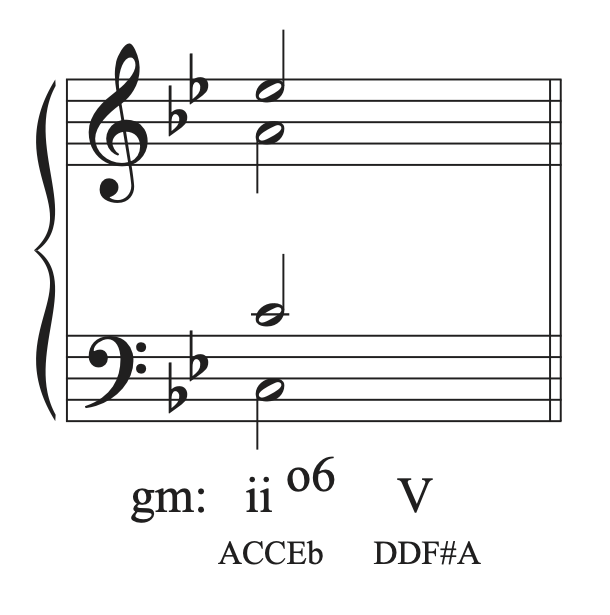
Next, voice the second chord. It’s a root position chord, so double the root. Move the voices as step-wise as possible to connect the chords. Then check your answer for errors.

Example 2
Now, let’s look at a chord progression involving two first inversion triads. After listing the notes available in each chord with correct doubling and accidentals, we are ready to part write.
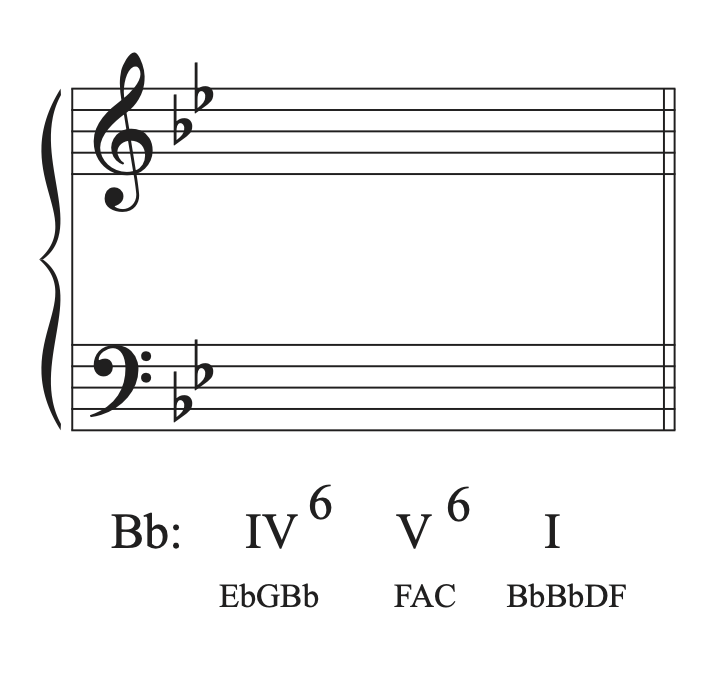
Let’s voice the first chord, taking into account good part writing guidelines. We can double any member of a first inversion chord as long as it is not a tendency tone like the leading tone. When deciding on which note to double, write all three members of the chord in first, then add the double note that fits the best with spacing. Keep in mind that you might have to go back and change the chord doubling depending on what chord comes next. Then, check for errors.
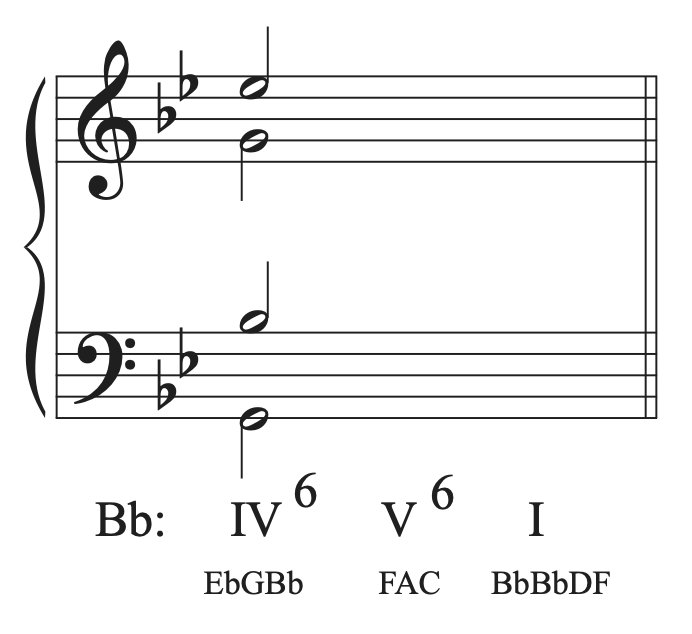
We will follow the same process for the next first inversion chord. When deciding what to double, fill in the three chord members first, then choose the pitch that produces the most step-wise motion with the remaining voice. Check for errors.
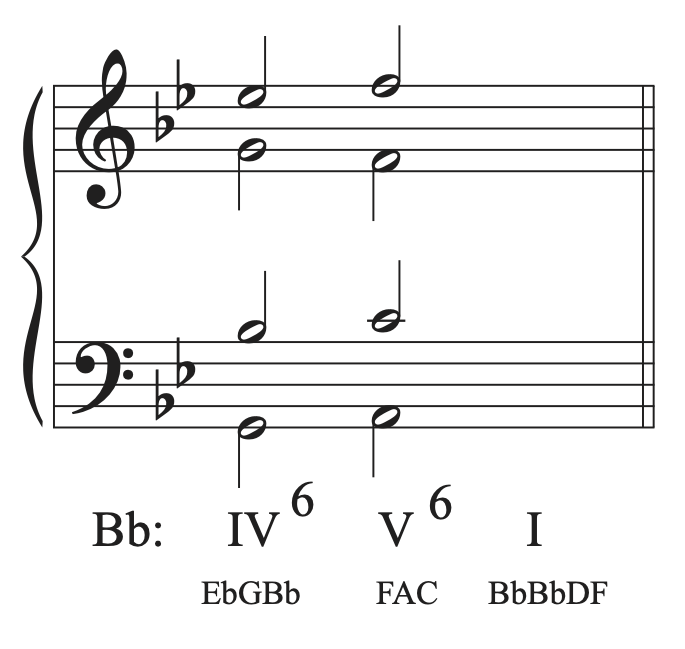
The last chord is a root position triad, so we must double the root. Look for the most step-wise motion possible from each voice to complete the chord. Check for errors.

Example 3
Let’s look at how the 7-6 suspension works over chords in first inversion. The first step is always to write the notes in each chord with correct doubling and accidentals.
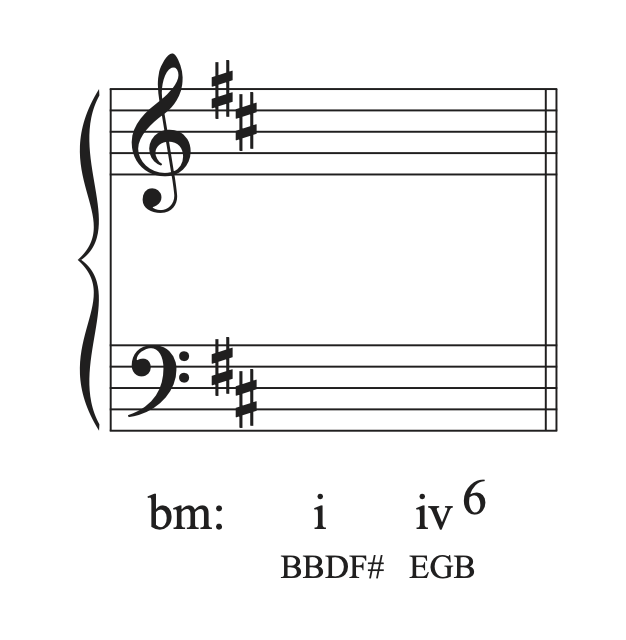
Then, part write the first chord following normal part writing guidelines. Check for errors.
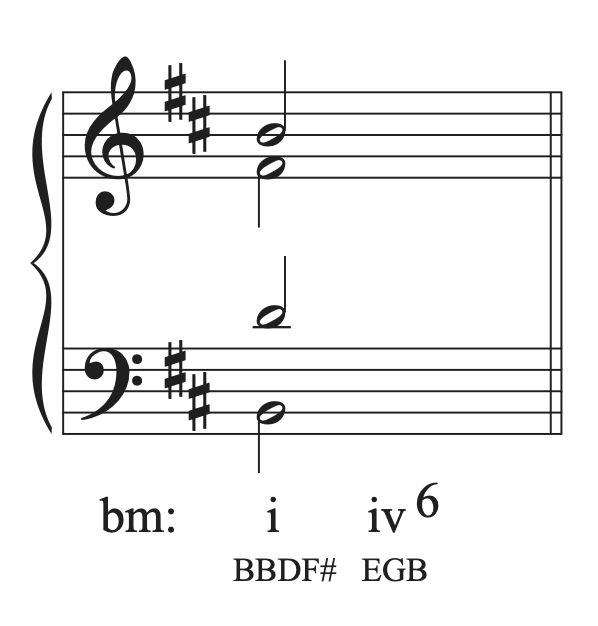
At this point, the easiest way to find a doubling for the first inversion chord that will work with the suspension is to find the voice that has the suspension and write in the suspension before the rest of the second chord. Since we do not have the second chord written, you need to use the first number of the suspension to identify which chord member in the first chord would form that interval with the bass of the second chord. Since the bass pitch of iv6 is G, and we are writing a 7-6 suspension, we need the note that is a 7th above G. That note is F#, which is in the alto voice, so the alto voice gets the suspension.
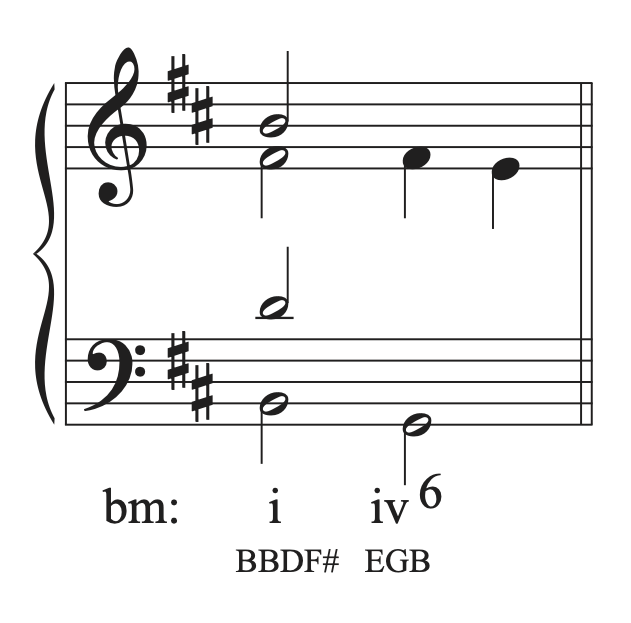
Now, you can part-write the rest of the iv6 chord. Make sure to remember not to double the leading tone if there is one (there is not in this example) or the resolution note of the suspension, which is E. We don’t double the resolution of a suspension note because it muddies the sound of the suspension on the main part of the beat. That means the D in the tenor should not move to an E in the next chord, and should go to a B (the next closest chord tone). Once you finish the chord, check for errors and make sure to label the suspension.
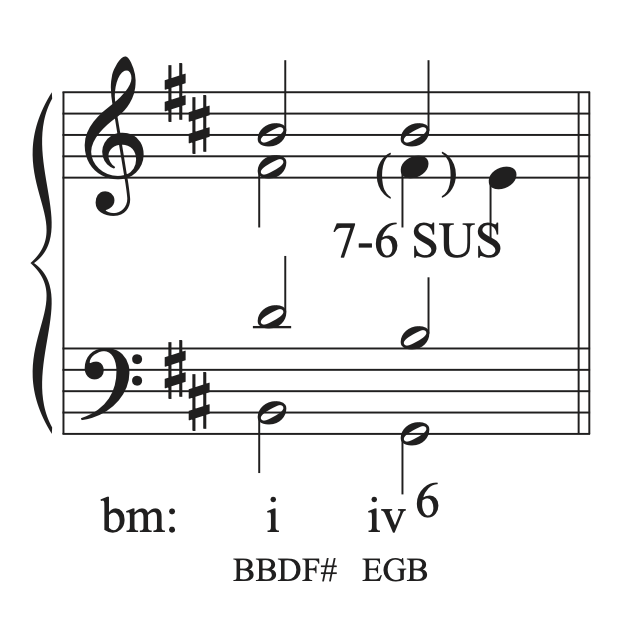
Example 4
Let’s look at how the 2-3 suspension works over chords in first inversion. The example is in C major. Write the notes in both chords, observing proper doubling and accidentals.
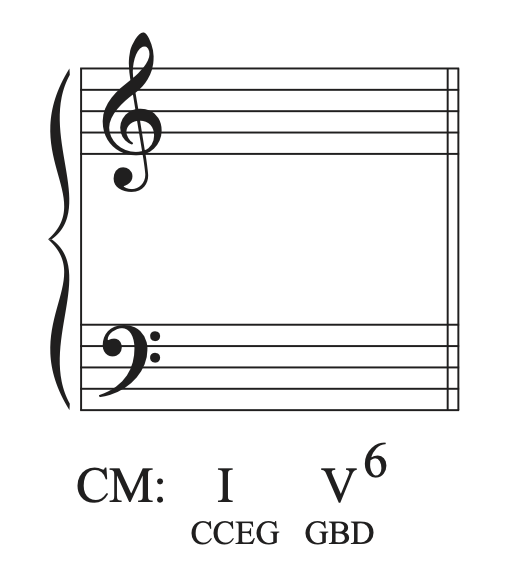
Next, part-write the first chord and check for errors.
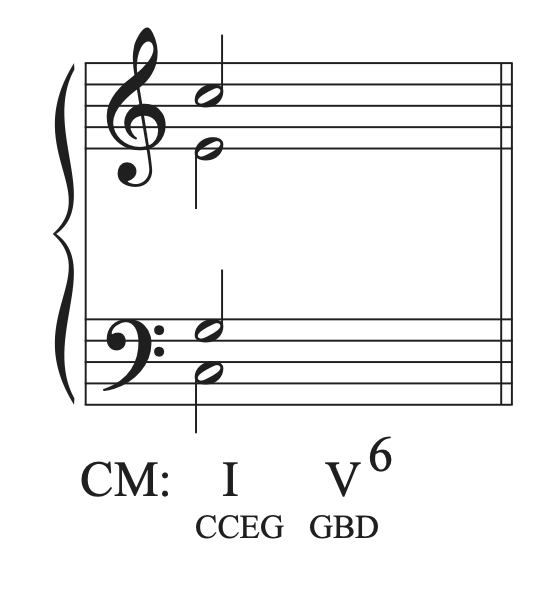
Now that the first chord is complete, we can find the suspension voice. Since this is a 2-3 suspension, it must go in the bass. It is the only suspension possible in the bass and cannot be used in the upper voices. So, we can draw in the suspension.

Now, complete the chord. When choosing what to double, remember not to double the leading tone or the resolution of the suspension. They happen to be the same note in this example. Retain common tones and move the other voices as stepwise as possible. Since the B cannot be doubled, the soprano will go up to a D to complete the chord. Make sure to label the suspension and check for errors.
